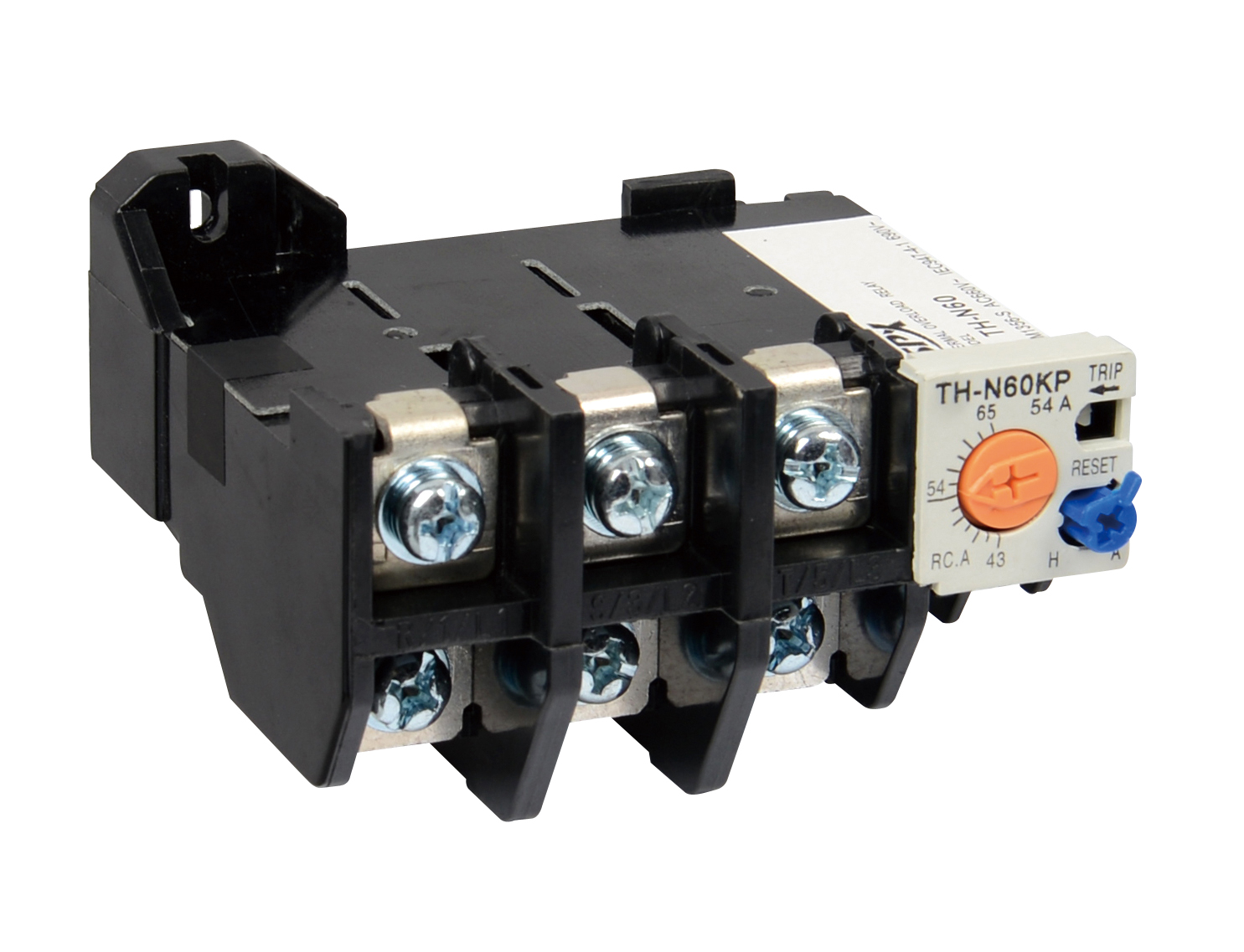Working principle of thermal overload relay
2024-07-10
Thermal overload relay is a protective device used for overload protection of electric motors or other electrical equipment and electrical circuits. When an electric motor or other electrical equipment is operated to perform work, such as driving production machinery, if an abnormal situation occurs in the machinery or an abnormal circuit causes the motor to overload, the motor's speed will drop and the current in the winding will increase, causing the winding temperature to rise.
If the overload current is not large and the overload time is short, the winding temperature of the motor will not exceed the allowable rise, and this overload is allowed. However, if the overload time is long and the overload current is large, the winding temperature of the motor will exceed the allowable value, causing the winding to age and shorten the service life of the motor. In severe cases, it may even cause the winding to burn out. Therefore, this type of overload is unacceptable to the motor. The thermal overload relay is a protective device that uses the principle of the current's thermal effect to cut off the motor circuit when the motor cannot bear the overload, thus providing overload protection for the motor.
When using a thermal overload relay to provide overload protection for an electric motor, the thermal element is connected in series with the stator winding of the motor, and the thermal overload relay's normally closed contact is connected in series with the control circuit of the AC contactor's electromagnetic coil. The adjustable current setting adjustment knob is used to adjust the distance between the human-shaped lever and the pusher to a suitable position. When the motor operates normally, the current through the thermal element is the rated current of the motor, and the thermal element heats up. The bimetal strip bends due to heat, and the push rod just touches the human-shaped lever without being able to push it. The normally closed contact is in the closed state, and the AC contactor remains closed, and the motor operates normally.
If the motor experiences overloading, the current in the winding increases, and the current through the thermal relay element increases, causing the bimetal strip to heat up even more and bend more, pushing the human-shaped lever. The human-shaped lever pushes the normally closed contact, causing the contact to open and open the AC contactor coil circuit, releasing the contactor and cutting off the power supply to the motor, stopping the motor to protect it.
The other functions of the thermal overload relay are as follows: The left arm of the human-shaped lever is also made of bimetal strip. When the ambient temperature changes, the bimetal strip in the main circuit will deform and bend to some extent, and the left arm of the human-shaped lever will also bend in the same direction to ensure that the distance between the human-shaped lever and the push rod remains basically unchanged, thus ensuring the accuracy of the thermal overload relay action.
This function is called temperature compensation. Screw 8 is the adjustment screw for the normally closed contact reset method. When the screw is positioned on the left, when the motor overloads, the normally closed contacts will open, and when the motor stops due to overloading, the bimetal strip of the thermal overload relay will cool and return to its original position. The movable contact of the normally closed contact will automatically return under the action of the spring. At this time, the thermal overload relay is in the automatic reset state.
When the screw is rotated counterclockwise to the right to a certain position, if the motor overloads at this time, the normally closed contacts of the thermal overload relay will open. The movable contact will move to a new equilibrium position on the right. The motor will be disconnected and stopped after the contact cannot be reset. The movable contact can only be reset by pressing the reset button. At this time, the thermal overload relay is in the manual reset state. If the motor overload is a fault, it is advisable to use the manual reset mode to avoid easily starting the motor again. If you want to switch the thermal overload relay from the manual reset mode to the automatic reset mode, simply rotate the reset adjustment screw clockwise to the appropriate position.



